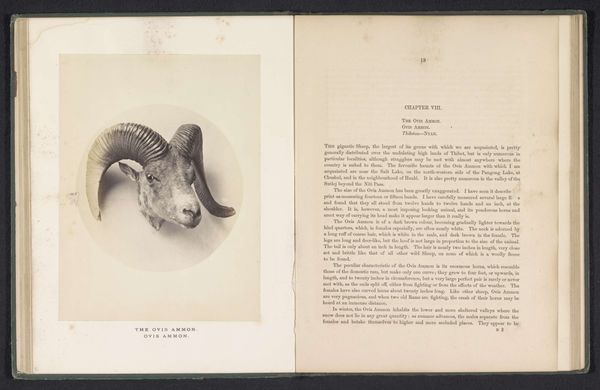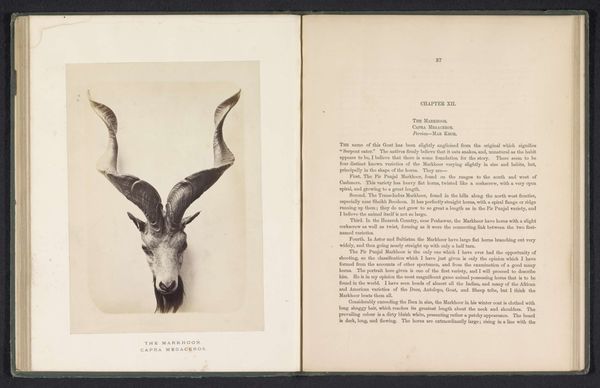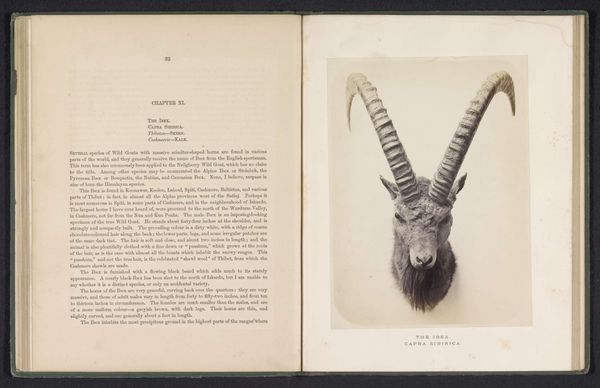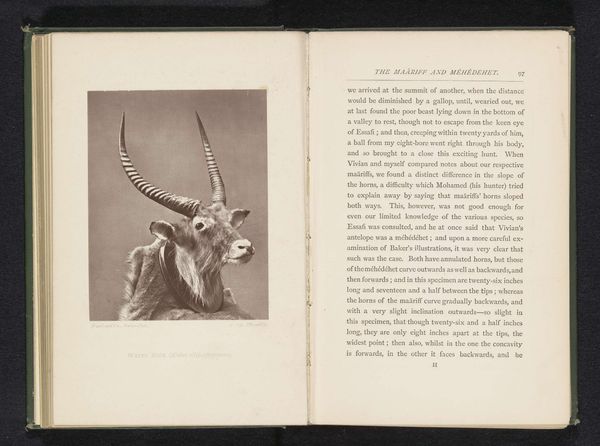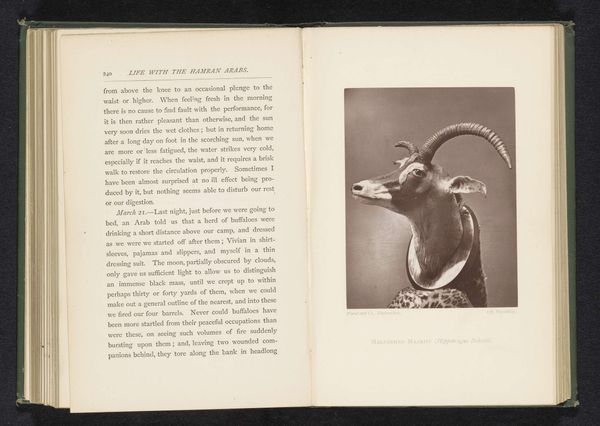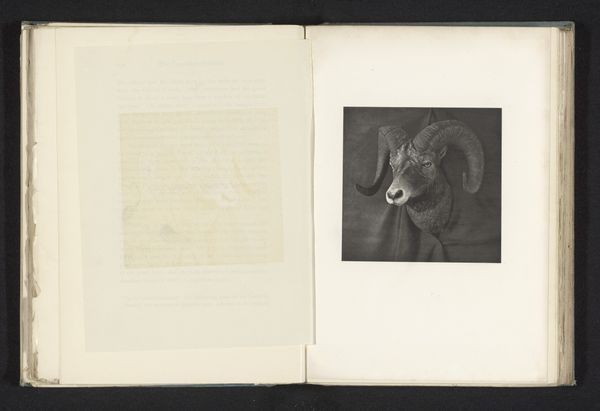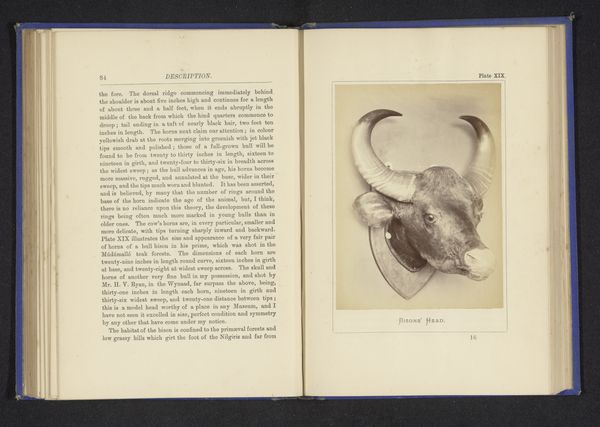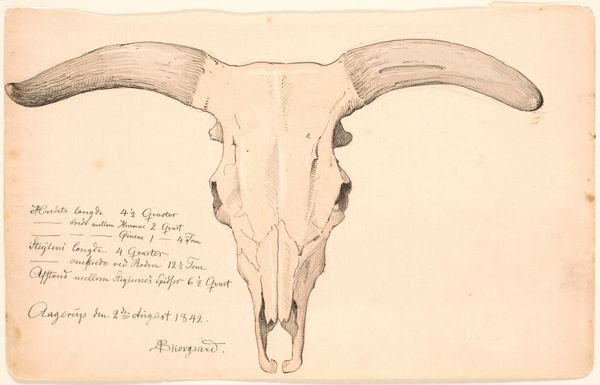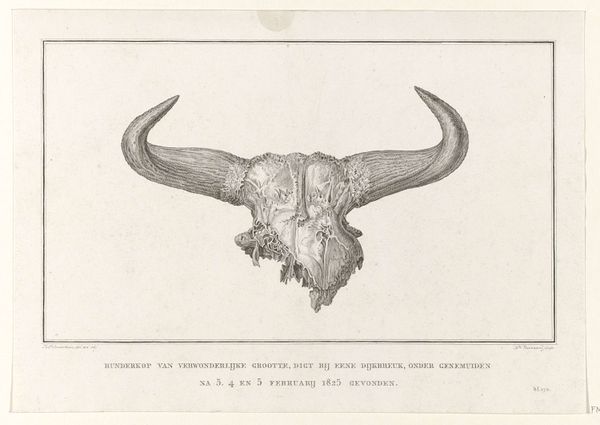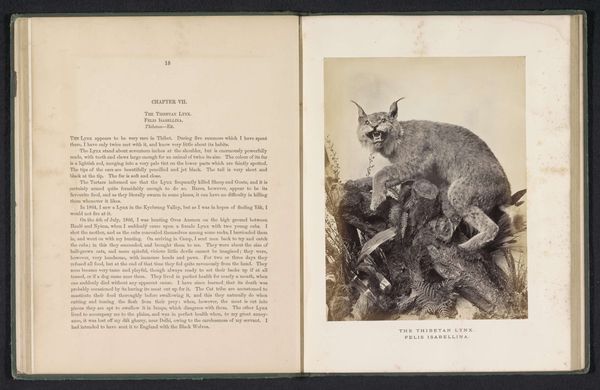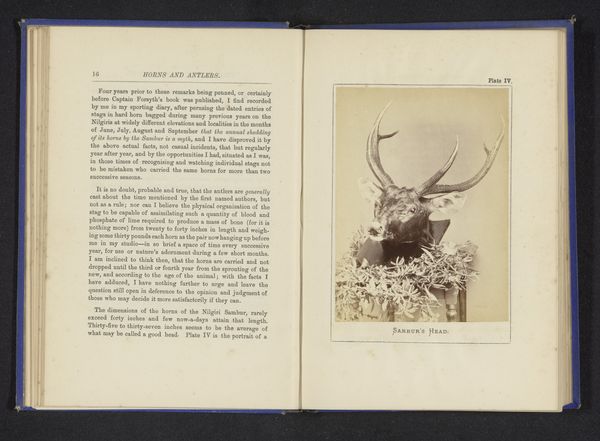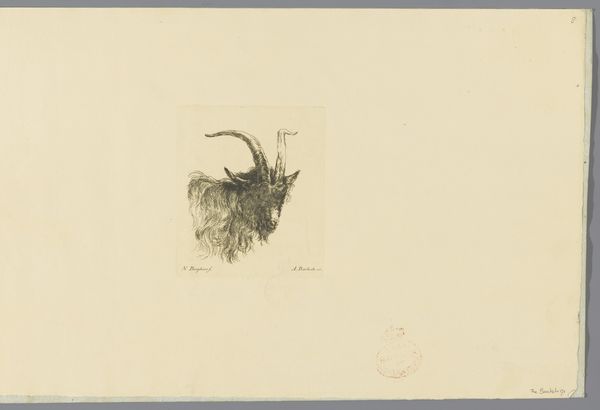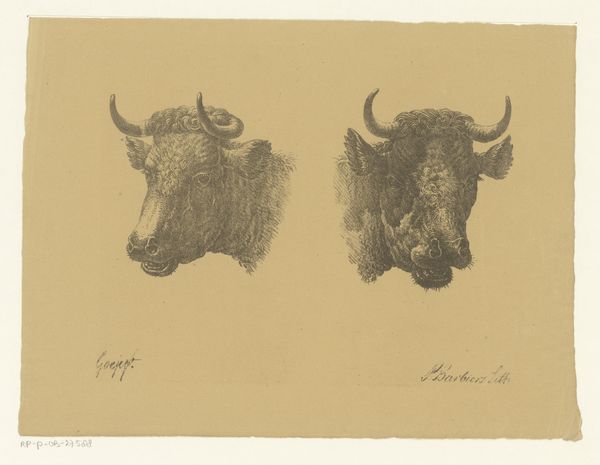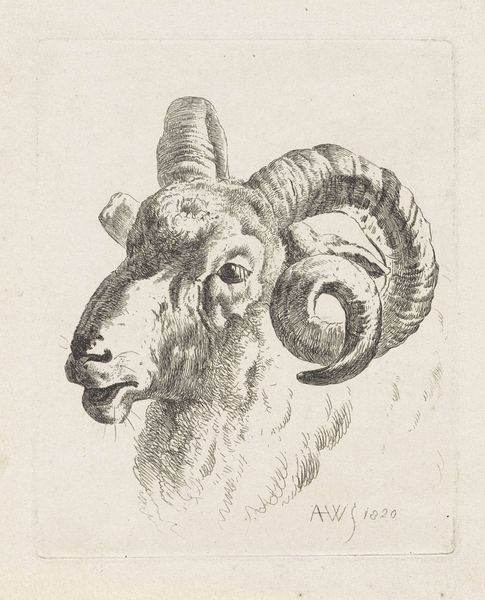
print, textile, photography
#
portrait
# print
#
textile
#
photography
Dimensions: height 200 mm, width 152 mm
Copyright: Rijks Museum: Open Domain
This photograph of a Burrell Sheep, or Ovis Nahura, was made by Arthur Lucas, though we don't know exactly when. It's a photograph in a book – a medium that rose to prominence in the Victorian era, partly through colonial encounters. The image and the accompanying text create meaning through visual codes and historical associations. Given the book format and the tradition of natural history studies, it probably dates from the late 19th century, when British imperial reach extended into the Himalayas. The Burrell was a prized trophy for sportsmen, and the image subtly reflects social structures of the time, particularly the British Empire's control over natural resources and its aristocratic social hierarchies. This photograph, therefore, wasn't just about documenting wildlife; it was about power, possession, and the way these were showcased in the metropole. Understanding this photograph better would involve researching Victorian hunting practices, imperial natural history, and the institutional history of museums and scientific societies that displayed such trophies. The meaning of this artwork is contingent on understanding its social and institutional context.
Comments
No comments
Be the first to comment and join the conversation on the ultimate creative platform.
